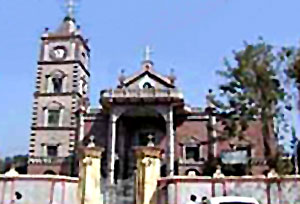 Reconstruction of Calcutta during early British rule in India signified the early years of 18th century, when the British East India Company had spread their business options throughout the country. To suit English tastes, Calcutta, the hotbed during the prolonged British regime, was made to transfer itself into a colonial city. As such, it affected all kinds of population, from layman to high-profile governmental jobholders.
Reconstruction of Calcutta during early British rule in India signified the early years of 18th century, when the British East India Company had spread their business options throughout the country. To suit English tastes, Calcutta, the hotbed during the prolonged British regime, was made to transfer itself into a colonial city. As such, it affected all kinds of population, from layman to high-profile governmental jobholders.
During the years of 1757 to 1773, following the destruction of the first Fort William in 1756 by Siraj-ud-Daula, the Company constructed a new Fort William, which stood out as the greatest fortress the British built in India. Captain Brohier served as architect, until he departed for Ceylon under the threat of prosecution for fraud. It then fell to Archibald Campbell (1739-1791) to complete the 2 million pounds facility.
In 1757, with Robert Clive`s restoration of British control over Calcutta, the city entered a period of great economic growth. This can be referred to as the ideal period of reconstruction of Calcutta during early British regime in India. To prove the great reconstruction, homeowners began to replace their old bungalows with Georgian styled town houses resembling downsized English country houses. The growth of these homes along the Hooghly River and the erection of new civic buildings in Calcutta earned in the sobriquet of the `City of Palaces`.
The Writers` Building was completed in 1780, as part of the reconstruction of Calcutta by Britishers in India. It contained nineteen sets of apartments for junior clerks of the East India Company. It also possessed several rooms designated for the use as classrooms for the new Fort William College. Thomas Lyon and Fortnam designed the structure in a classical style, but it was not viewed as a success. In 1880, the Company redesigned the building`s front with a Corinthian motif and assigned it for the use by the Bengal Secretariat.
On 28th June 1787, St. John`s Church in Calcutta received consecration. Captain James, a military engineer, injected aspects of neo-classicism into his design for the church which he had likely adopted from Gibb`s Book of Architecture (1728). As a replacement for St. Anne`s, destroyed by Siraj-ud-Daula, it bore many similarities to London`s St. Martin-in-the Fields.






































